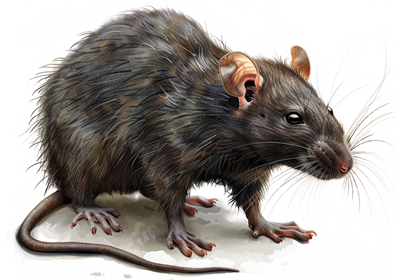External Features of the Rat
External Features of the Rat
-
Size and Shape: Rats typically have small to medium-sized bodies with elongated shapes. They are generally larger than mice but smaller than many other rodents.
-
Fur: Rats are covered in fur, which can vary in color depending on the species and individual genetics. Common colors include brown, black, gray, and white. The texture of the fur is typically soft and dense.
-
Tail: Rats have long, hairless tails that are typically longer than the length of their bodies. The tail is often scaly and can be used for balance, communication, and temperature regulation.
-
Ears: Rats have large, rounded ears that are proportionate to the size of their heads. Their ears are highly sensitive and can move independently to help them detect sounds from various directions.
-
Eyes: Rats have small, round eyes with black or dark-colored irises. Their eyesight is relatively poor compared to their other senses, but they have good low-light vision and can detect motion effectively.
-
Whiskers: Rats have long, sensitive whiskers called vibrissae on their faces. These whiskers are used to navigate and explore their environment, as they are highly sensitive to touch and vibrations.
-
Teeth: Rats have large incisors that continuously grow throughout their lives. These incisors are used for gnawing and chewing on various materials, including food and nesting materials.
-
Feet and Claws: Rats have four feet with sharp claws that are well-suited for climbing, digging, and grasping objects. Their hind feet are typically larger and more powerful than their front feet, providing them with stability and agility.
-
Snout: Rats have pointed snouts with a keen sense of smell, which they use to locate food, detect predators, and communicate with other rats through scent marking.
Determine the Sex of the Rat
-
Testes: Male rats have visible testes located behind the penis. These are usually visible as two small, round bumps.
-
Nipples: Female rats have noticeable nipples, while male rats do not.
Rat Navigation
Step 1: Body Regions
Step 2: External Features
Step 3: Expose the Muscles
Step 4: Expose the Bones
Step 5: Head & Neck
Step 6: Thoracic & Abdomen
Step 7: Urogenital System
